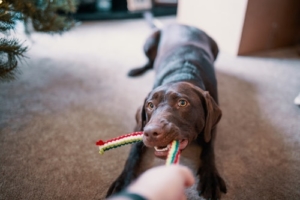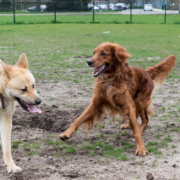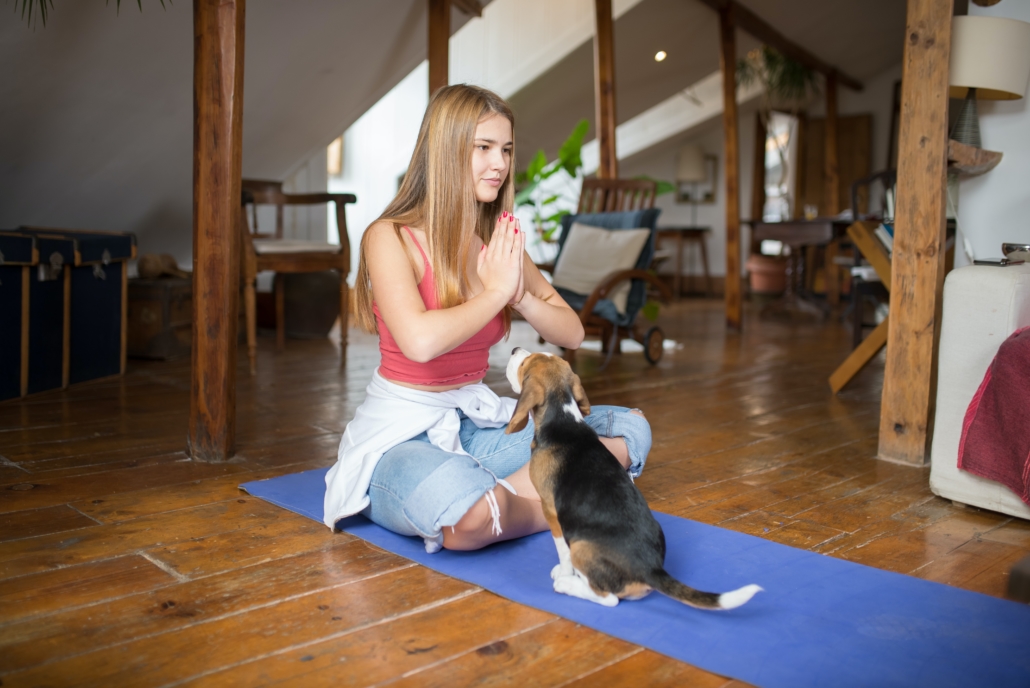
Dogs who do not receive enough exercise are more likely to act inappropriately. Bad habits include leaping on humans, biting things that aren’t meant to be chewed, digging holes, clawing, and barking or whining too much.
There are a few things you can do to make sure that your dog is exercised enough on a daily basis so that he or she is too worn out to act inappropriately. When you don’t feel up to taking your dog on regular walks, here are four alternatives you may try to assist your dog in burning off extra energy.
Play games with your dogs
There are many different games you can play with your dog at home. One of our favorites is scent work. You can assist your dog to hone in on their inherent abilities by playing nose work games with them, and it’s also a simple method to keep them engaged.
Nose work: In order to begin the game, you will need to ensure that your dog remains in the specified place. While he is watching you, walk to the other end of the room and put some food or his favorite toy there for him to find. Before your dog starts looking for a hidden snack, you will create an association between certain words or phrases and behaviors that remind the dog of the food or a treat. Tell your dog to “find it” or “search” when you are ready to free him from his confinement. Be sure to praise your dog after each successful search round to reinforce the “search!” in his mind. After a few demonstrations, he will be aware of what is expected of him.
You may go on to more difficult exercises after it seems that your dog understands the “find it” command. While your dog is in the remaining posture, move the reward or toy out of his line of sight so that you may retrieve it later.
During this particular search activity, the goal is to progressively expand to new places and distances as you go. When you are just getting started, it is best to confine the game to one or two rooms. If you are certain that your dog understands the “find it” command, it is time to go on to the next level, which consists of hiding objects about the home.
The following are some of the advantages of training your dog nose work:
- Dogs like doing nose work since it’s both entertaining and rewarding.
- Enjoyable activity that will provide your dog with increased brain stimulation
- Building your dog’s confidence via nose work
- Provides your dog with more opportunities for physical stimulation
- It provides your dog with healthy activities to engage in.
- Simple activities that can help you form a stronger relationship with your dog
Involve other owners and their dogs
Many dogs love to be in the company of other dogs and play with them (as long as they get along). They chase each other, jump, wrestle, and, in general, exhaust each other. Organize regular meetings with other owners or set up a regular date at the park to expand your dog’s circle of friends (and yours too). Just make sure that you follow the safety and etiquette rules for your dog park.
Have your dog play in the grass
If you have a garden or park near your home, replace the dog walk with a play session. Most dogs love to play fetch, so why not start to fetch training? A ball launcher can make the game more fun for your dog and less tiring for you, as it allows you to shoot the ball much farther with almost no effort, much to the delight of your dog (and your arms).
Agility Dog Equipment is another way to get your dog to exercise and mentally stimulate him. You can build a path using objects you find at home, in the garage, or in DIY stores: an old hula hoop can become a ring to jump into, plastic pipes can be assembled to become obstacles, while pallets can be transformed into ramps or platforms. You can also purchase tunnels, plastic cones, or other gear at pet stores to complete your route. Many dogs, like the White husky, will definitely enjoy playing on the grass.
Teach new commands
What commands does your dog know?
“Sit” is one of the most fundamental commands to teach your dog, teaching them to sit is a terrific starting point. Dogs who aren’t taught the “Sit” command are going to be much more difficult to handle and will have a more restless demeanor than dogs that do know this easy order. In addition, teaching your dog the “Sit” command will prepare them for more difficult commands such as “Stay” and “Come.”
The word “come” is another vital command for you to teach your dog and should be practiced often. This order is especially useful for those occasions if you find yourself unable to maintain your grasp on the leash. It can be taught easily and will be of great use in preventing mischief with your dog.
“Stay” is a command that is very helpful in preventing your dog from putting himself in harm’s way. With the command “stay” you can train your dog to ignore one object in exchange for a higher reward which is essential.
In conclusion
Walking your dog is great exercise and bonding for both of you, but it can be monotonous and occasionally it is good to get out of the usual routine. Sometimes , you might not be free to go for a walk or you need an alternative to get your dog exercise without going for a walk, I hope you find the tips in this article helpful.
Guest Author: Pet expert Emma has spent 12 years following her passion for animals as a writer and editor in the pet industry. Her expertise includes dog and cat health, care, nutrition, feeding, grooming, behavior, and training.

